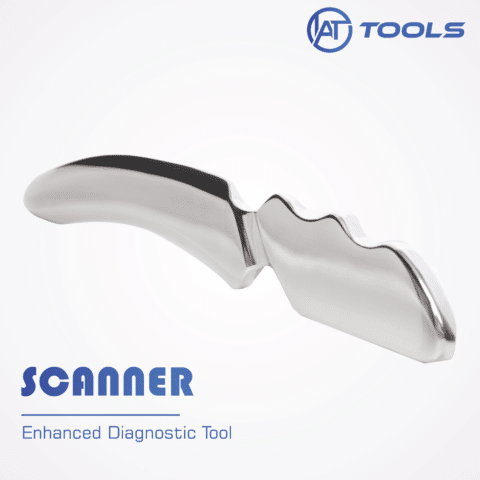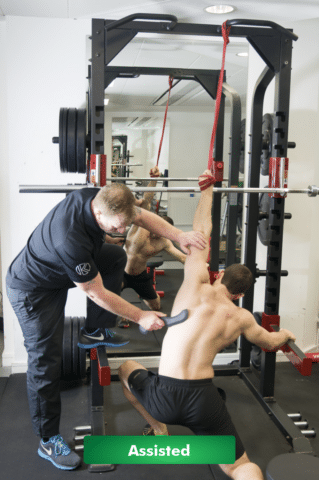With the boom in the industry over the last decade, there are now many materials that IASTM tools can be made from, many methods by which they can be manufactured and many designs that they can be made into. With most brands of IASTM tool manufacturers claiming to have the best instruments, how do you know what would best suit your needs?
This page will give you important information what IASTM tools are made from, how they are manufactured and how these factors impact the function and price of the instrument so that, no matter what brand you invest in, you’ve made an educated decision and won’t be disappointed with the results.
IASTM Tools : Why Materials Matter.
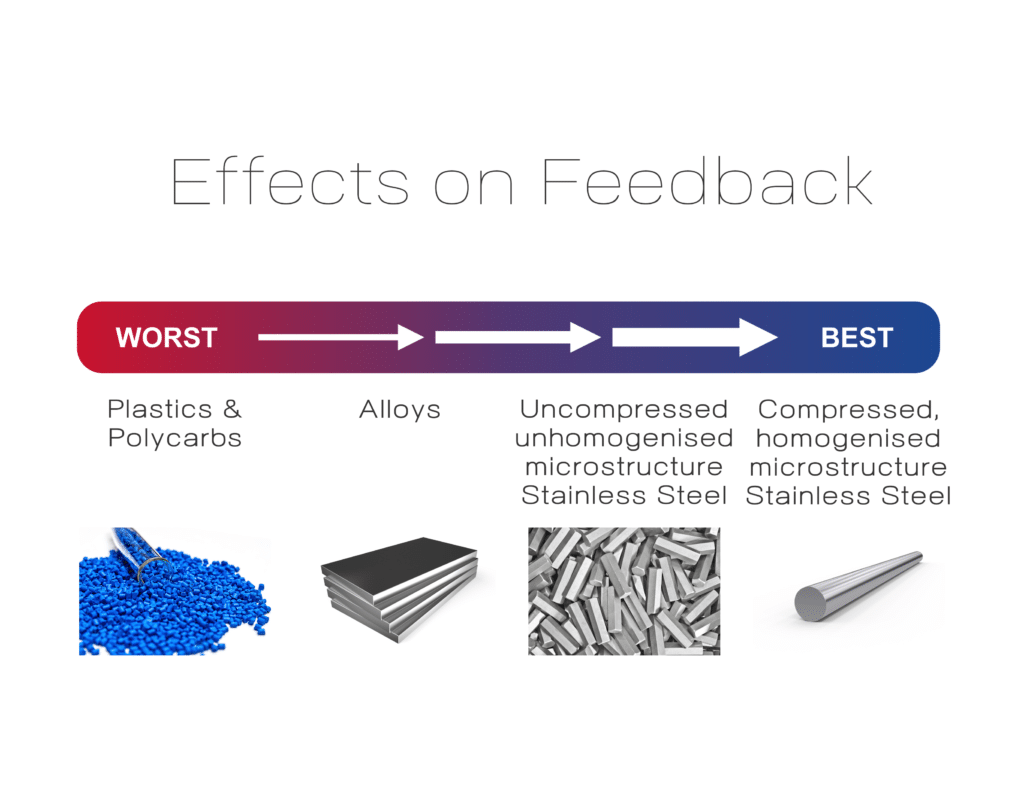
Plastics – Polycarbonates
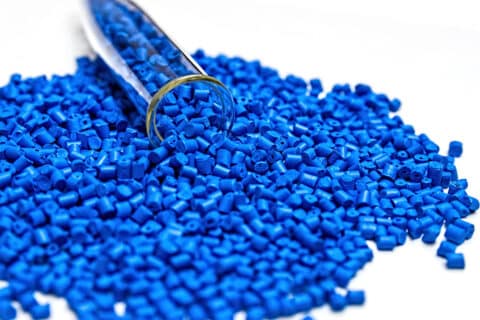
A great positive for polymers, polycarbonates, resins and plastics is the lower cost to the manufacturers. This should translate to a lower purchase price as a finished IASTM instrument. However, they are easier to damage, often creating micro-fissures in the tool that can harbour bacteria and do not possess the diagnostic feedback properties as other materials. Metal based IASTM tools are generally easier to clean, harder to damage and have better feedback properties. For those reasons, the majority of the world’s IASTM tool manufacturers have chosen to use some form of metal as their material of choice.
Aluminum Alloys
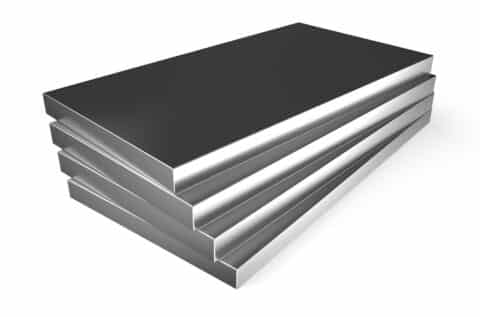
Aluminum and various non-stainless steel alloys are usually in the mid price bracket as a material for manufacturers to buy and as the finished IASTM tool for practitioners. They currently do not give the superior diagnostic feedback that stainless steel offers, but if that is not important to you, they also don’t carry the heftier price tag.
Stainless Steel
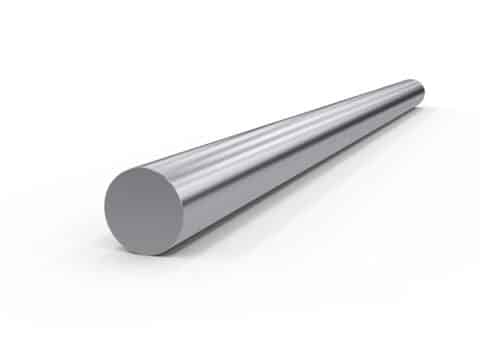
Stainless steel currently gives the best diagnostic feedback for IASTM tools but also carries the heaviest price tag. However, it is a more complex story than that. Using the wrong type of steel, or if it is processed in the wrong way, will create an IASTM instrument that gives disappointing diagnostic feedback but with the same more expensive price tag.
There are many different grades and series of stainless steel. Each has appreciable differences in the look, feel, longevity and diagnostic feedback they give to the IASTM tool. The different grades are a reflection of the varying components and amounts of alloys that, when combined, form the stainless steel. The 300 series is still currently considered the “gold standard” by manufacturers for IASTM instruments. The 300 series is generally the most durable form of stainless steel, which is important if you want your investment to last. The 316 grade, often referred to as ‘marine grade’ due to its increased resistance to salt water corrosion, contains a higher nickel content. This allows it to have a slightly enhanced mirror finish over 304 grade. However, we found little appreciable difference in diagnostic properties nor general feel between 304 and 316 grades.
The method by which the stainless steel is processed is also a very important, and usually overlooked, factor. Manufacturers will buy stainless steel as blocks or “billets” from their suppliers. These will have been created in either a shorter or longer process. Briefly, the longer process includes an extra pressure, chemical and cooling phase than the shorter. Due to these additional processing steps, the stainless steel from the longer process will be more expensive to buy for manufacturers from their suppliers.
Does this really matter? Hugely. The extra pressure, chemical and cooling process creates a more compressed and homogenised microstructure to the stainless steel that transmits mechanical vibration more consistently and with less decrease in feel. This means better feedback. It is one of the main reasons why two brands of IASTM tools, both using stainless steel, can give such differences in quality of diagnostic feedback.
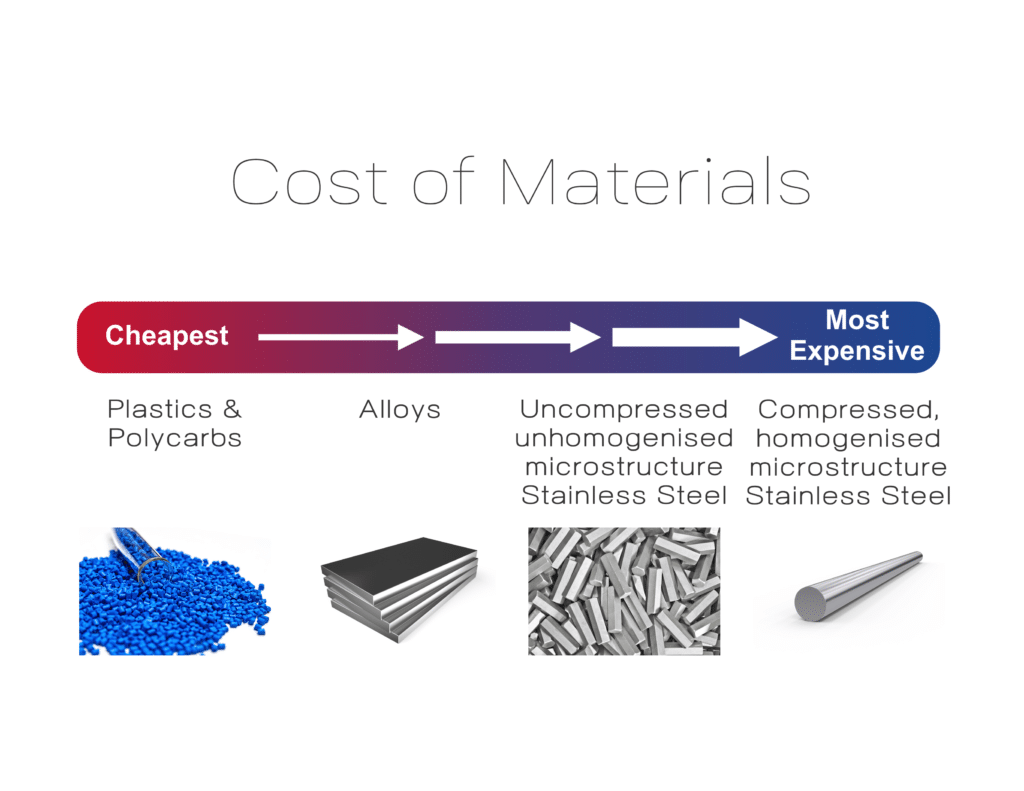
IASTM Tools : Why Manufacturing Matter.
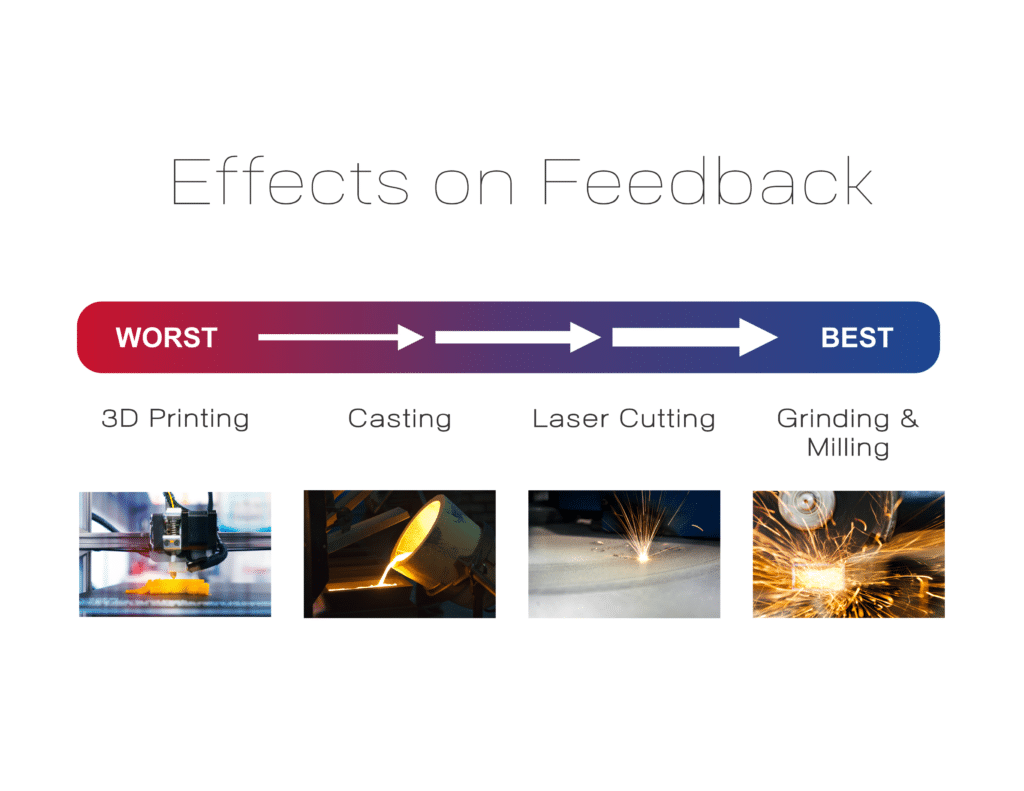
The method by which IASTM instruments are manufactured is an equally important consideration as the materials when evaluating which IASTM tools to purchase. If you have invested the extra time, effort and money in finding IASTM instruments that use the materials you desire, but they are manufactured in the wrong way, you will have a product that is disappointing in its results.
As the most common materials used by manufacturers are metal or alloy, IASTM instruments can be produced in several ways; laser cutting, 3D printing, casting and finally, milling & grinding. Each of these manufacturing processes varies in its cost and effect on the internal structure of the materials used, and therefore the diagnostic feedback quality the instrument gives.
The IASTM industry is not the first to notice the importance of materials and manufacturing on feedback. Golf club manufacturers have spent millions of dollars in research to give their golfers the best feedback through impact on the ball. Just as with IASTM experts, golf pros will tell which materials and manufacturing methods give them the best feel.
3D Printing
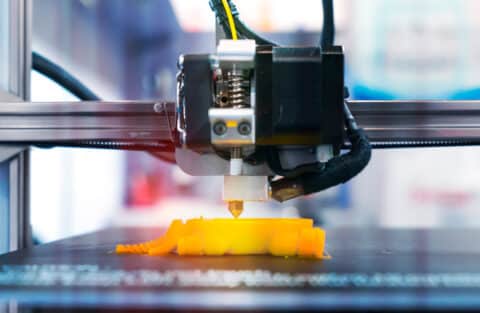
The most recent and modern addition to the list of IASTM tool production methods is 3D printing. Manufacturers will use an industrial 3D printer and literally print the IASTM instrument. A great positive of 3D printing is that this method of manufacturing is significantly cheaper than other methods when created in bulk, which should relate to a decreased price in the final product. The drawback is that it has a significant negative impact on the microstructure of tool. Increased numbers of voids, impurities and irregular microstructure arrangement all decrease resonance and mechanical force transmission ultimately leading to an IASTM tool with poor diagnostic feedback.
Laser Cutting
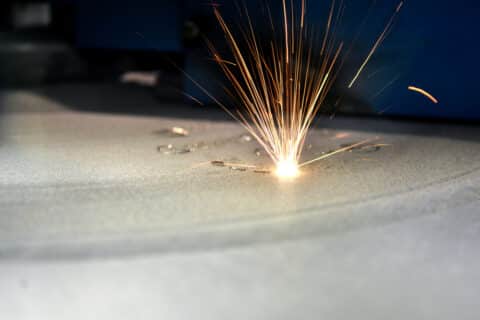
Another recent addition to the list of IASTM instrument production methods is the use of laser cutting. Manufacturers will use an industrial laser cutter and a computer program to perform an automated process of cutting out the shape of the tool from its original stock. A great positive for laser cutting is, like 3D printing, when created in bulk this method of manufacturing is significantly cheaper than other methods. Another added benefit is that, as long as the materials used are of sufficient quality, it will create an IASTM tool with better feedback than either 3D printing or casting and polishing methods.
However, due to amount of heat created on the outer surface, along with poor cooling conditions, it will still create some negative microstructure changes. This means that the finished tool will have reduced feedback qualities compared to those created by a carefully controlled milling and grinding process.
Casting
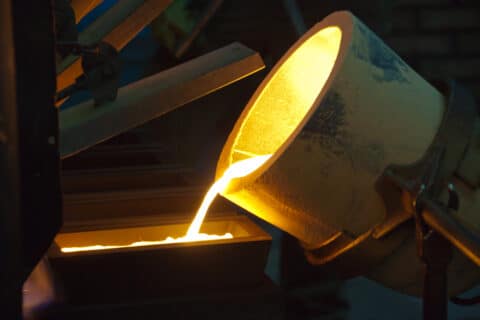
Molten metal is poured into predesigned instrument shaped moulds, often made of sand. The metal is then cooled and hardened into the rough shape of the instrument before being polished to the required finish. This process greatly increases the speed and reduces the overall cost of IASTM tool production.
However, this process often creates porosities and inclusions within the grain structure of the metal. Porosities are small voids that form during the casting process. Inclusions are microscopic particles which become trapped inside the grain structure of the metal contaminating it. In other words, no matter how good the quality and processing of the original materials, these imperfections in the the manufacturing process create an uncompressed, unhomogenised microstructure that reduces the ability of the instrument to transmit the force vibrations to the practitioner’s hands.
Milling & Grinding
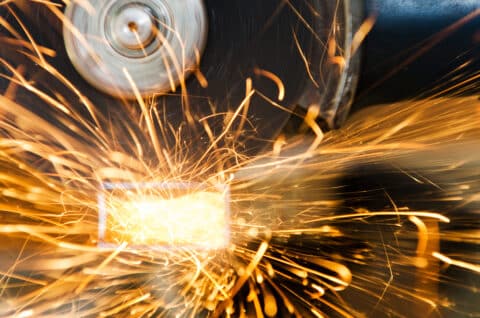
The downside is that this process is the most expensive. Unlike the casting process, the original materials used to make the IASTM instruments aren’t re-melted. Instead, the shape is created by removing excess material by a grinding, milling and cooling process from the original block or “billet”. This machining process creates a rough shape which can then be polished to the desired finish. Carefully controlled, this manufacturing process creates less microstructure imperfections and the resulting IASTM tools have better feedback for the practitioner.
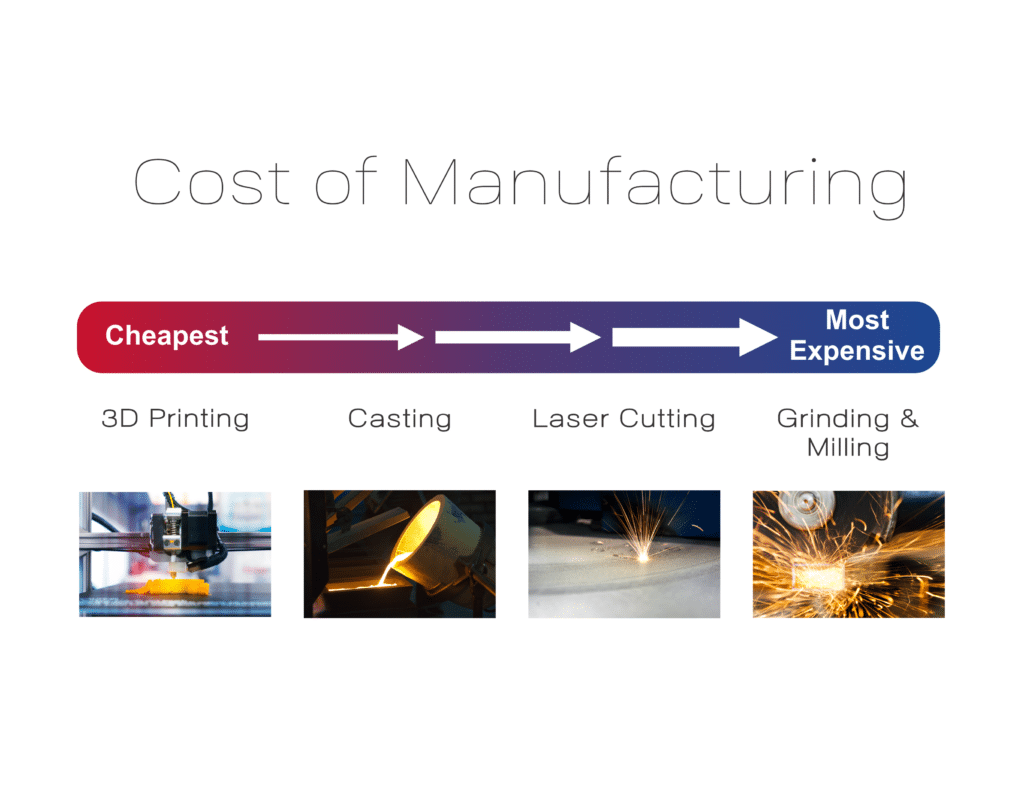
IASTM Tools : Want To Know More?
Have you decided against Graston Tools? But do want high quality tools from a reputable manufacturer? Then check out our range of IAT® Tools as well as The Scanner, specifically designed to make the most out of diagnostic feedback.
Want to find out more information on tools? Then check out our IAT® Neurology Seminar. It has a module on tools that contains lesson topics on terminology and the importance of tool design on the function of the tool. So many people have the problem of wonder whether they should buy a single tool or a whole set and these lessons help answer that.
Want to read about IASTM courses (and why you may want to find an better alternative)? Then check out our page on IASTM Certifications here.
Want to know the IASTM techniques that are. worth learning? Then check out the videos and information on the diagnostic concept page here.
Want to know a skill that the very best practitioners use? Then check out the information on the 4×4 treatment matrix here.


